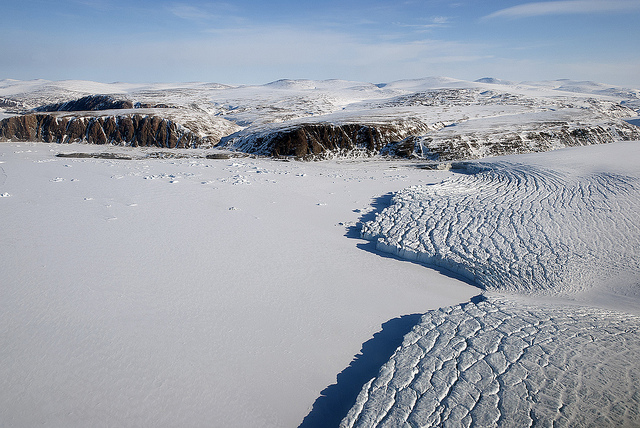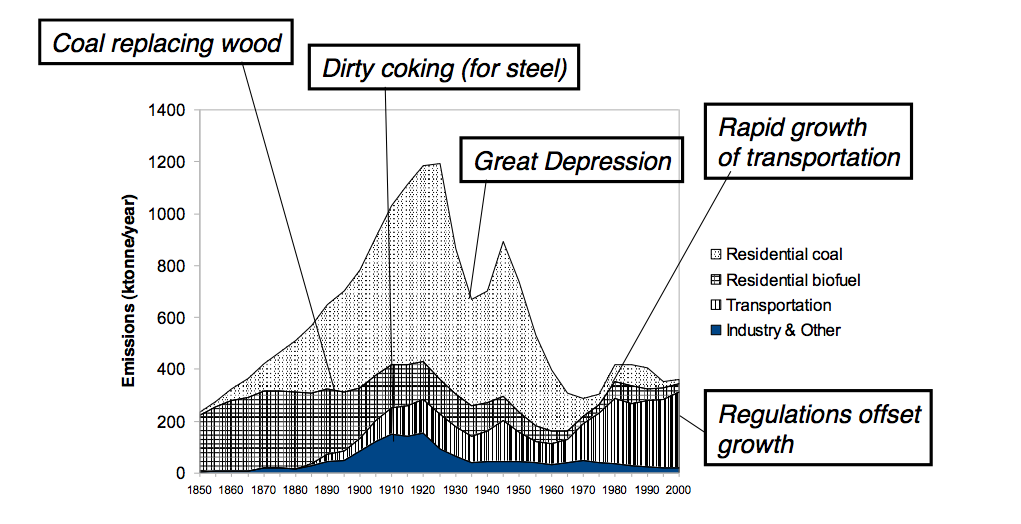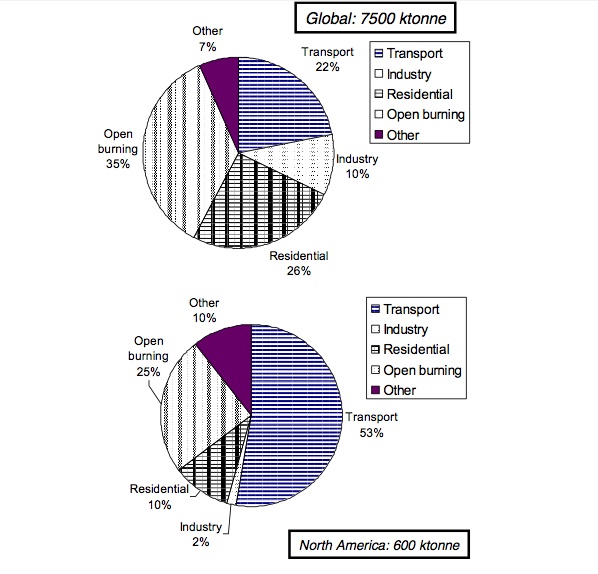
Black carbon, the sooty particle that gives smoke from diesel engines and cooking fires a dark appearance, took center stage this week when Secretary of State Hillary Clinton attended a high-profile meeting of the Arctic Council in Nuuk, the capital of Greenland.
Black carbon has attracted the attention of climatologists and policy makers alike because its complex structure makes it so good at absorbing sunlight. To make this point, University of Illinois-based Tami Bond, one of the nation’s leading black carbon specialists, noted during a Congressional hearing last year that one ounce of black carbon dispersed in the atmosphere would block the amount of sunlight that would fall on a tennis court. The absorbed energy then gets transferred to the atmosphere as heat and contributes to global warming.
The Arctic Council meeting coincided with the release of two scientific reports focused on the cryosphere. The first, authored by the scientific arm of the Arctic Council, argued that the United Nations underestimated the rate at which the Arctic is losing sea ice and concluded the Arctic Ocean could be ice-free within the next thirty to forty years. The second makes the case that it’s possible to cut Arctic ice loss significantly by curbing black carbon emissions.
I’ve written before about the possibility that reducing black carbon emissions could save Arctic Sea ice. Recent modeling, conducted by Stanford’s Mark Jacobson and funded in-part by NASA, suggests that eliminating soot emissions from fossil fuel and biofuel burning over the next fifteen years could reduce Arctic warming by up to 1.7 °C (3 °F). (Net warming in the Arctic, in comparison, has been about 2.5 °C (4.5 °F) over the last century.
Future emissions aside, what has actually been happening with black carbon deposition trends in the Arctic? Have black carbon emissions, like carbon dioxide emissions, been going steadily up in recent decades?
A recent report, authored by climatologists at NASA’s Goddard Institute for Space Studies, offers a nice overview that I’ve excerpted below. It may come as a surprise that the amount of black carbon winds are dumping on Arctic ice has actually fallen over the last few decades. From the GISS study:
Recently there has been concern about impacts of black carbon on snow albedo in the Arctic and whether that has contributed to melting of Arctic sea-ice and snow. Some studies have focused on changes in Arctic BC since the 1980s when measurements were first made. Sharma et al. (2004) found a 60% decrease in atmospheric black carbon at Alert between 1989 and 2002. Recent Arctic snow measurements (e.g. Grenfell et al., 2009; Hegg et al., 2009) found BC concentrations to be about 5-15 ng g−1 in Canada, Alaska and the Arctic Ocean, about a factor of two lower than measured in the 1980s (e.g. Clarke and Noone, 1985). Contemporary Russian measurements are larger than the western Arctic, ranging from about 15-80 ng g−1, while BC concentrations in the Barants and Kara seas were measured at about 15-25 ng g−1 (Grenfell et al., 2009; Hegg et al., 2009). The Greenland ice sheet has relatively very low BC levels, about 2-3 ng g−1, similar to the measurements in the 1980s (Grenfell et al., 2009).
Bond showed some particularly helpful graphs during her testimony last year that give long-term emission trends. According to Bond’s estimates, black carbon emissions peaked around the turn of the century when dirty cooking stoves were common.

She also has showed a good graph that shows the sectors that produce the most black carbon.

Text by Adam Voiland. Image of Pitufkin Glacier in Greenland from NASA’s IceBridge Mission. Graphs from Tami Bond.
